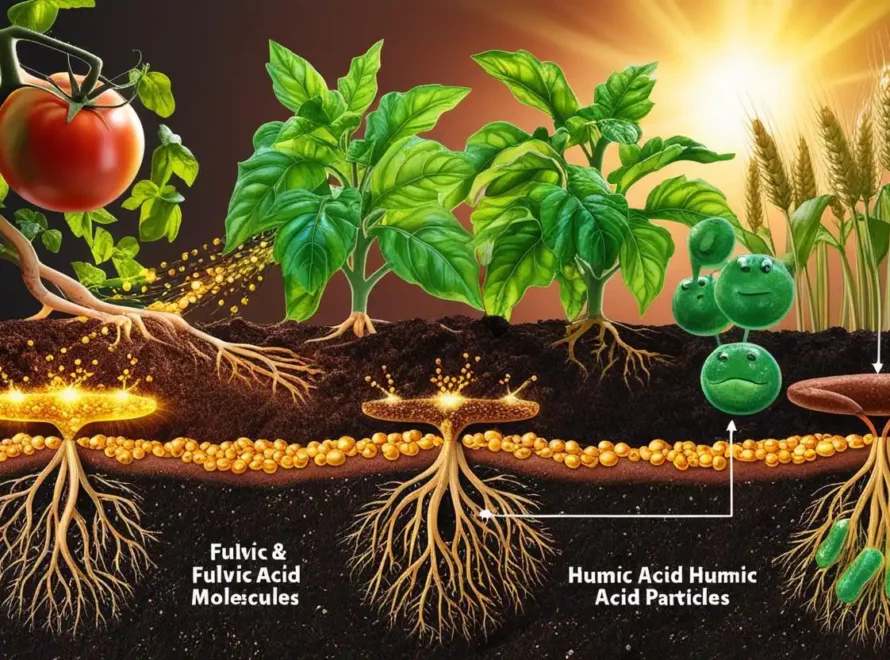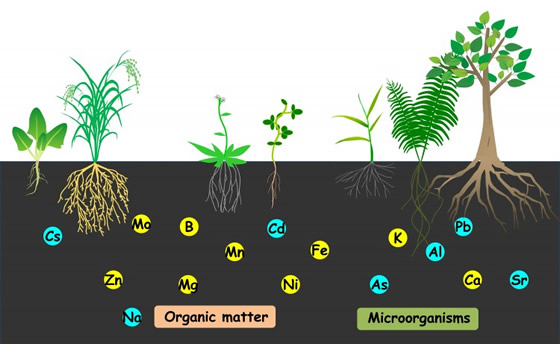you can transform your soil and boost crop yields with humic acids and organic matter. These natural substances play a key role in humic acids in sustainable agriculture because they help crops grow stronger and healthier in many types of soil. Recent studies show impressive results:
| Study | Crop | Treatment | Result |
|---|---|---|---|
| Kong et al. (2022) | Various | Humic acid urea | Better nutrient use, higher yields |
| Lenssen et al. (2019) | Soybean | Humic product | Yield increase reported |
When you use these tools, you support healthy soil and reduce the need for synthetic fertilizers. Start making changes today for a better harvest.
Key Takeaways
- Humic acids and organic matter improve soil health by increasing nutrients, water retention, and helpful microbes, leading to stronger plants and higher yields.
- Applying humic acids through seed treatment, soil amendment, foliar sprays, or combined with mulch boosts crop growth and nutrient uptake effectively.
- Different soil types benefit uniquely from humic acids: they loosen clay, hold water in sandy soils, and enhance nutrient use in loam soils.
- Using humic acids supports sustainable farming by reducing synthetic fertilizer needs, improving soil stability, and helping plants resist stress.
- Testing your soil and applying the right humic acid dosage at key growth stages ensures the best results and helps you track progress over time.
Humic Acids and Organic Matter
What They Are
Humic acids and organic matter are natural substances that form as plants and animals break down in the soil. You can find them in compost, peat, and even in some fertilizers. Scientists divide humic substances into three main groups: fulvic acids, humic acids, and humins. Fulvic acids dissolve in water at any pH. Humic acids dissolve only in alkaline conditions, but not in strong acids. Humins do not dissolve in water at all. These groups can exist as tiny particles, dissolved in water, or as coatings on soil minerals.
The structure of humic acids is very complex. They contain pieces of old plant waxes, proteins, and other natural materials. Researchers use special tools like electron paramagnetic resonance (EPR), fluorescence spectroscopy, and nuclear magnetic resonance (NMR) to study these substances. These tools help scientists see the different chemical groups and how they interact in the soil. The structure and makeup of humic acids can change depending on the environment and how you manage your soil.
How They Help Soil
You can improve your soil by adding humic acids and organic matter. These substances boost soil health in several ways:
- Increase the amount of organic carbon in the soil, which helps store nutrients and water.
- Raise the levels of important nutrients like nitrogen, phosphorus, and potassium.
- Stimulate soil enzymes, such as urease and sucrase, which help break down nutrients for plants.
- Support the growth of helpful bacteria and fungi, making the soil more alive and active.
- Change the chemical structure of the soil, making it easier for plants to absorb nutrients.
Studies show that when you add humic acids, the total organic carbon in soil can rise quickly. Microbial activity also increases, especially for bacteria that help trap carbon in the soil. These changes make your soil richer and more fertile, leading to healthier plants and better yields.
Application Methods
Seed Treatment
You can start improving your crops before they even sprout by treating seeds with humic acids. This method helps seeds germinate faster and grow stronger roots. Studies show that natural humic acids work better than synthetic ones. For example, using 5 mg/L of one type of natural humic acid or 50 mg/L of another can boost the germination index by up to 698% compared to untreated seeds. When you treat seeds at the right dosage—about 4–5 liters per ton of seed—you can increase plant fresh weight by 30% and dry weight by 25% in wheat.
Follow these steps for best results:
- Choose high-quality seeds that match your soil and climate.
- Prepare a humic acid solution at the recommended concentration.
- Coat the seeds evenly, making sure every seed gets covered.
- Let the seeds dry before planting.
- Test your soil regularly to check nutrient levels and pH.
- Watch your plants as they grow and adjust your care as needed.
- Share your experiences with other growers to learn and improve.
Tip: Even coverage and correct dosage are key. Too much or too little can reduce the benefits.
Soil Amendment
You can mix humic acids directly into your soil to improve its structure and fertility. This method works well when you prepare your seedbed. Research shows that applying humic acids at 10, 12, or 15 kg per hectare, combined with compost at 4, 6, or 8 Mg per hectare, gives the best results. The highest improvements come from using 8 Mg per hectare of compost with 15 kg per hectare of humic acid. Apply these amendments before sowing, usually in the fall.
| Parameter | Dosage/Timing Details |
|---|---|
| Humic acid dosages | 10, 12, and 15 kg ha−1 |
| Compost dosages | 4, 6, and 8 Mg ha−1 |
| Application timing | At seedbed preparation (October) |
| Application method | Manual incorporation into soil before sowing |
| Crop studied | Winter field pea (Pisum sativum L.) |
| Highest improvement | 8 Mg ha−1 compost + 15 kg ha−1 humic acid combination |
When you add humic acids to the soil, you increase total nitrogen by about 28–29%. This happens because humic acids slow down the loss of nitrogen, keeping more nutrients available for your plants. You also help the soil hold more water and nutrients, which leads to healthier crops.
Foliar Use
Spraying humic acids directly onto plant leaves is another effective method. Foliar application lets plants absorb nutrients quickly, especially during key growth stages. Studies show that foliar sprays of humic acids at low concentrations (0.1%–0.2%) can increase maize yield by 13–14%. Liquid or foliar applications of fulvic acids also boost plant growth, stem diameter, and yield more than soil-applied forms.
When you use foliar sprays, you help plants resist diseases and stress. For example, turfgrass treated with a humic acid-amino acid spray showed better color, less disease, and higher photosynthesis rates. Higher doses (2.0–3.0 L per hectare) improved nutrient uptake, especially nitrogen and iron. Foliar humic acids also increase sugar, oil, and protein content in fruits and grains.
To apply foliar sprays:
- Mix humic acid with water at the recommended concentration.
- Spray evenly on leaves during cool parts of the day.
- Repeat as needed during the growing season, especially when plants show stress.
Note: Foliar sprays work best at lower concentrations. Too much can harm leaves or waste product.
Combining with Mulch
You can get even better results by combining humic acids with organic mulch, such as straw, compost, or manure. This approach improves soil health and crop yields in several ways:
- Humic acids help break down mulch, releasing nutrients slowly and reducing the need for synthetic fertilizers.
- They keep nutrients like nitrogen and potassium in the soil, preventing them from washing away.
- Humic acids help soil particles stick together, which improves water movement and reduces erosion.
- They support helpful soil microbes, making the soil more fertile.
- Studies show that combining humic acids with organic fertilizers like vermicompost increases plant growth, nutrient uptake, and protein content.
- Humic acids boost chlorophyll and protein in plants, leading to better metabolism and higher yields.
- A three-year field study found that mixing humic acid with manure improved soil quality by up to 74% and increased sunflower yield by up to 34%. This combination also made the soil ecosystem work better, especially in salty soils.
Tip: Spread mulch evenly and apply humic acids as a spray or drench. This ensures both materials work together for the best results.
By using these application methods, you can make your soil healthier and your crops more productive. Choose the method that fits your farm and watch your plants thrive.
Adapting to Soil Types
Clay Soils
Clay soils often feel sticky and heavy. They hold water well but can become compacted, making it hard for roots to grow and for air to reach them. When you add humic acids and organic matter, you help break up the tight clay particles. This makes the soil softer and easier for roots to move through. Humic acids also help water drain better, so your plants do not get waterlogged.
Studies show that humic acids change how pollutants and nutrients move in clay soils. They can help reduce the risk of harmful chemicals staying in the soil. You can also mix in sand or volcanic stone to improve drainage and reduce compaction. Adding lime can help if your clay soil is too acidic.
Tip: Spread organic matter like compost or well-rotted manure on top of clay soil each year. This keeps the soil loose and healthy.
Sandy Soils
Sandy soils drain water quickly and often lose nutrients fast. Plants in sandy soils can dry out or lack important minerals. Humic acids help sandy soils hold onto water and nutrients longer. They act like tiny sponges, soaking up moisture and feeding your plants over time.
You can boost sandy soils by adding compost, biochar, or even a small amount of clay. These materials help the soil store more water and nutrients. Humic acids also support helpful microbes, making your soil more active and fertile.
- Add organic mulch to keep moisture in.
- Use humic acid products to improve nutrient retention.
Loam Soils
Loam soils are a mix of sand, silt, and clay. They are often the best for growing crops because they hold water and nutrients well. When you add humic acids to loam soils, you make them even better. Studies show that humic acids increase soil moisture, improve structure, and help plants take up more nutrients.
| Benefit | Effect in Loam Soils |
|---|---|
| Water retention | Increases by up to 26% |
| Nutrient bioavailability | Improves for key plant nutrients |
| Soil structure | More stable and less compacted |
| Plant growth | Stronger roots and greener leaves |
You can also add compost or green manure to loam soils for extra organic matter. If your loam is too acidic, a little lime can help balance the pH.
Humic acids work in all soil types by helping plants adapt to stress, improving root growth, and making nutrients easier to absorb. This makes your soil healthier and your harvests bigger.
Humic Acids in Sustainable Agriculture
Boosting Yields
You can see real results when you use humic acids in sustainable agriculture. These natural substances help your crops grow stronger and healthier. They improve plant traits like canopy uniformity, plant height, and chlorophyll content. You also get better photosynthesis and more efficient use of nutrients. Humic acids in sustainable agriculture boost root growth by making roots thicker and increasing the number of root hairs. This means your plants can take up more water and nutrients from the soil. Studies show that humic acids in sustainable agriculture can increase crop yields by about 12%. You will notice that your plants handle stress, like drought, much better. Humic acids in sustainable agriculture also help plants recover faster after tough weather.
- Humic acids in sustainable agriculture stimulate enzymes that help plants use nitrogen.
- They act like plant hormones, making your crops grow faster and stronger.
- You can expect higher yields, even in challenging conditions.
Improving Soil Health
When you add humic acids in sustainable agriculture, you help your soil become richer and more stable. These substances increase the amount of organic carbon in your soil. They help form larger soil aggregates, which protect soil organic carbon and improve structure. You will see better water movement and less erosion. Biochar and straw, when used with humic acids in sustainable agriculture, make soil particles stick together. This keeps nutrients in the soil and supports healthy microbes. Over time, your soil holds more water and nutrients, making it easier for plants to grow.
A long-term study showed that manure and humic acids in sustainable agriculture increased soil stability and carbon storage. The soil became healthier at different depths, which helps crops grow well year after year.
Reducing Environmental Impact
You can lower your use of synthetic fertilizers by using humic acids in sustainable agriculture. These substances help soil keep more nitrogen, so you do not need to add as much chemical fertilizer. Humic acids in sustainable agriculture also boost the activity of soil microbes. These microbes turn inorganic nitrogen into organic forms, which plants can use more easily. This process reduces the risk of nitrogen washing away into rivers and streams.
- Humic acids in sustainable agriculture increase soil organic carbon by up to 42%.
- They help keep nutrients in the root zone, reducing pollution.
- You support a cleaner environment and healthier crops at the same time.
Using humic acids in sustainable agriculture gives you better yields, healthier soil, and a smaller environmental footprint. You help your farm and the planet.
Best Practices
Dosage and Timing
Getting the right dosage and timing helps you get the most from humic acids and organic matter. Always start with a soil test to know your soil’s needs. Use the table below to guide your application:
| Aspect | Recommendation / Data |
|---|---|
| Soil Application Dosage | 1–5 lbs per acre (less for sandy, more for clay soils) |
| Foliar Application | 1–2% potassium humate in water for spraying leaves |
| Crop-specific Dosage | Leafy greens: 1–2 lbs/acre; Fruiting plants: 2–4 lbs/acre; Root vegetables: 3–5 lbs/acre |
| Timing | Apply at planting or during key growth stages |
| Soil pH | Keep between 6.0–7.5 for best results |
| Precautions | Avoid over-application; check compatibility with other fertilizers; watch plant response |
A study showed that applying 4.5 L/ha of humic acid at the heading stage of durum wheat increased grain yield by 28%. This result shows how timing and dosage can make a big difference.
Tip: Always adjust your rates based on your crop and soil test results.
Monitoring Results
You need to track your soil’s progress to see real improvements. Soil organic matter (SOM) is a key sign of soil health. Humic acids help build SOM faster than other inputs. It can take 3–5 years to see a 1% increase in SOM, so patience is important. Use soil and tissue sampling to check nutrient levels and organic matter. Digital tools like AgVerdict and CropSights help you monitor changes over time. These tools let you see how your soil improves after each season.
Regular monitoring helps you adjust your practices for even better results.
Sharing Knowledge
Learning from others helps you succeed. Many growers join workshops or share their results online. For example, the American Farmland Trust runs workshops and collects case studies from farmers who use humic acids. These stories help others see what works.
| Location | Crop Type | Practice Used | Yield Improvement | Knowledge Sharing Method |
|---|---|---|---|---|
| Brazil | Coffee | Humic Acid Potassium | 20% increase | Blog and grower networks |
| India | Rice | Humic Acid Potassium | 15% increase | Blog and grower networks |
Sharing your experience helps others and builds a stronger farming community.
You can improve your soil and boost your harvest by using humic acids and organic matter. Pilot programs in India showed better soil quality within a year after humic acid treatment, even in areas with heavy metal contamination. Composted organic matter rich in humic acids increases soil fertility, water retention, and plant growth. These methods work in all soil types and help you face farming challenges. Start using these practices, track your progress, and help build a more sustainable and productive future for agriculture.
FAQ
What is the best time to apply humic acids?
You should apply humic acids at planting or during early growth. This timing helps roots develop and improves nutrient uptake. For best results, follow the recommended schedule for your crop.
Can you mix humic acids with other fertilizers?
Yes, you can mix humic acids with most fertilizers. Always check product labels for compatibility. Mixing them can boost nutrient efficiency and improve soil health.
How long does it take to see results?
You may notice better plant growth within weeks. Soil health improvements, like higher organic matter, can take one to three years. Regular monitoring helps you track progress.
Are humic acids safe for organic farming?
Yes! Humic acids come from natural sources. Most products meet organic standards. Always check for certification before use.







